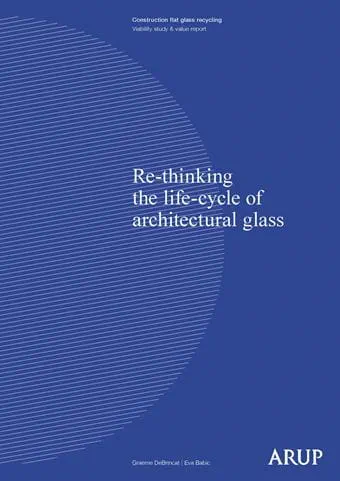Re-thinking the life-cycle of architectural glass brings together recent research into the economic, technical, environmental and logistical viability of closed-loop construction glass recycling.
Glass is a 100% recyclable material. It can be re-melted an infinite number of times and the architectural glass industry has the potential to be a perfect example of a scalable circular economy in action. However, coupled with the short service life of insulating glass units used in double and triple glazing applications, there appears to be a disparity between the material’s potential and its current construction process.
Across the EU, the proper recycling of all building glass waste, compared to the business-as-usual scenario, could avoid 925,000 tonnes of land-filled waste every year. 1.23 million tonnes of primary raw materials could be saved. Carbon emissions could be reduced by more than 230,000 tonnes annually. Recycling glass back to the float line is achievable but it requires a new network to develop and new processes to be put in place to ensure the quality of recovered glass.
In this research, we have developed an understanding of the current recycling logistical structure in the UK as well as the typical refurbishment construction process and supply chain. Limitations, barriers and viability of a circular approach were explored to propose a strategy for the implementation of an operational system. We have also identified next steps including a potential pilot project, the Burrell Renaissance Project in in Glasgow.
